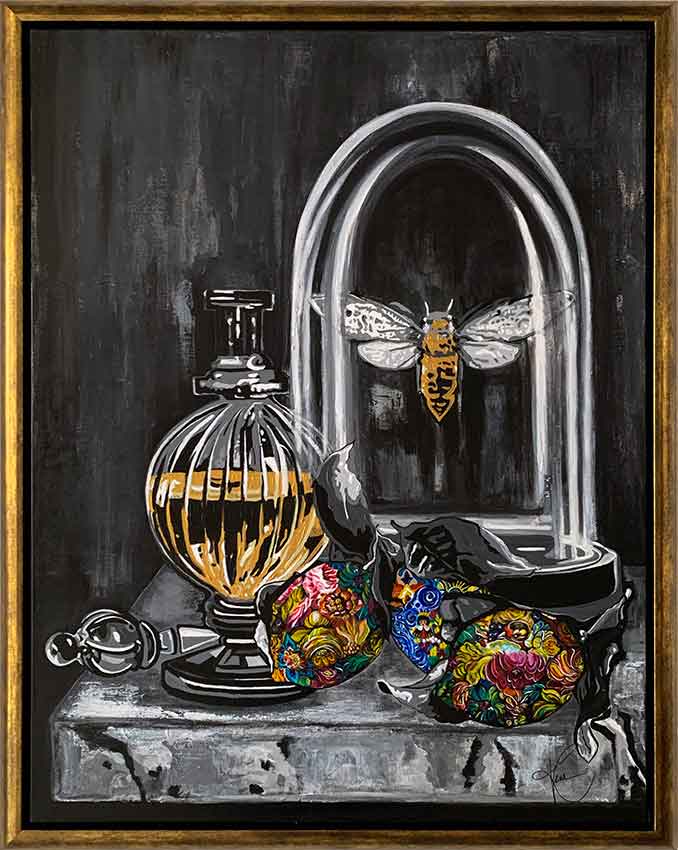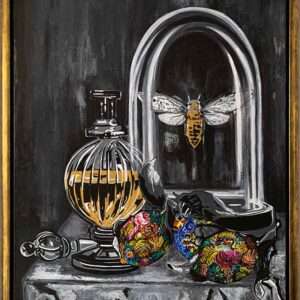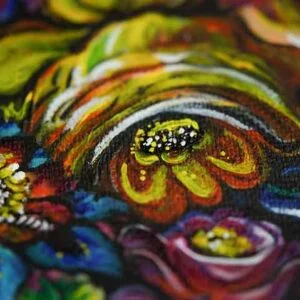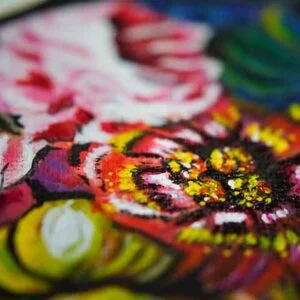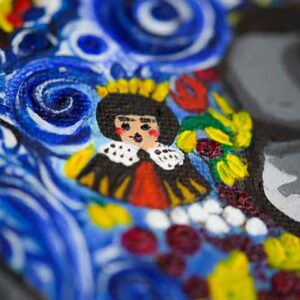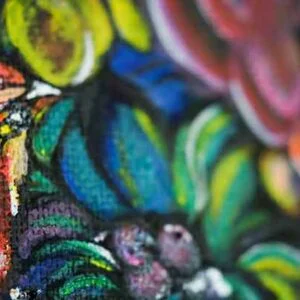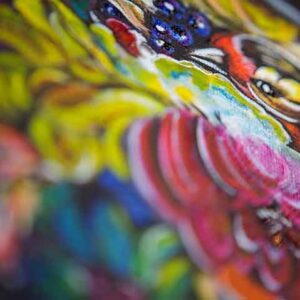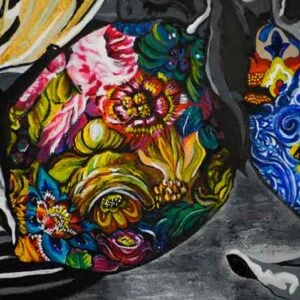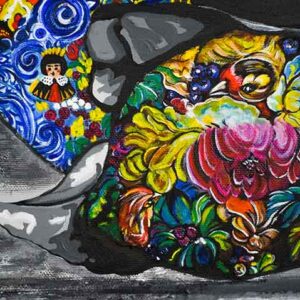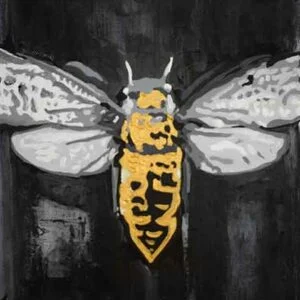NECTAR & AMBROSIA
ACRYLIC ON CANVAS 70X90CM
Delivered by doves every morning on Mount Olympus, Nectar and Ambrosia was what the Greek gods consumed during their heavenly feasts. It is said that this food and drink of the gods could confer immortality upon anyone who was to consume it. It is also widely believed that due to their healing and life-giving powers that nectar and Ambrosia might be different forms of honey, which is why they are often portrayed to have a golden shine.
In this oeuvre, we see the glimmering nectar in a decorative vessel with an encased honeybee looming in the background. The presence of the honeybee not only pays homage to the possible origins of Ambrosia but also serves as an ironic reminder of the dwindling population of a creature frequently used to symbolize immortality in various art forms for centuries. The declining number of bee colonies is a matter that can have everlasting ramifications on our ecosystem and environment.
This piece confronts its viewer with contrasting thematic forces: the fabled idea of immortality versus the stark finiteness of being mortal, the celebratory feast of life against the ornate loneliness of death. We come to understand that our fascination with immortality only exists because the thought of our end always looms in the back of our minds.
NECTAR & AMBROSIA
Acrylic on Canvas 70x90cm
Delivered by doves every morning on Mount Olympus, Nectar and Ambrosia was what the Greek gods consumed during their heavenly feasts. It is said that this food and drink of the gods could confer immortality upon anyone who was to consume it. It is also widely believed that due to their healing and life-giving powers that nectar and Ambrosia might be different forms of honey, which is why they are often portrayed to have a golden shine.
In this oeuvre, we see the glimmering nectar in a decorative vessel with an encased honeybee looming in the background. The presence of the honeybee not only pays homage to the possible origins of Ambrosia but also serves as an ironic reminder of the dwindling population of a creature frequently used to symbolize immortality in various art forms for centuries. The declining number of bee colonies is a matter that can have everlasting ramifications on our ecosystem and environment.
This piece confronts its viewer with contrasting thematic forces: the fabled idea of immortality versus the stark finiteness of being mortal, the celebratory feast of life against the ornate loneliness of death. We come to understand that our fascination with immortality only exists because the thought of our end always looms in the back of our minds.
